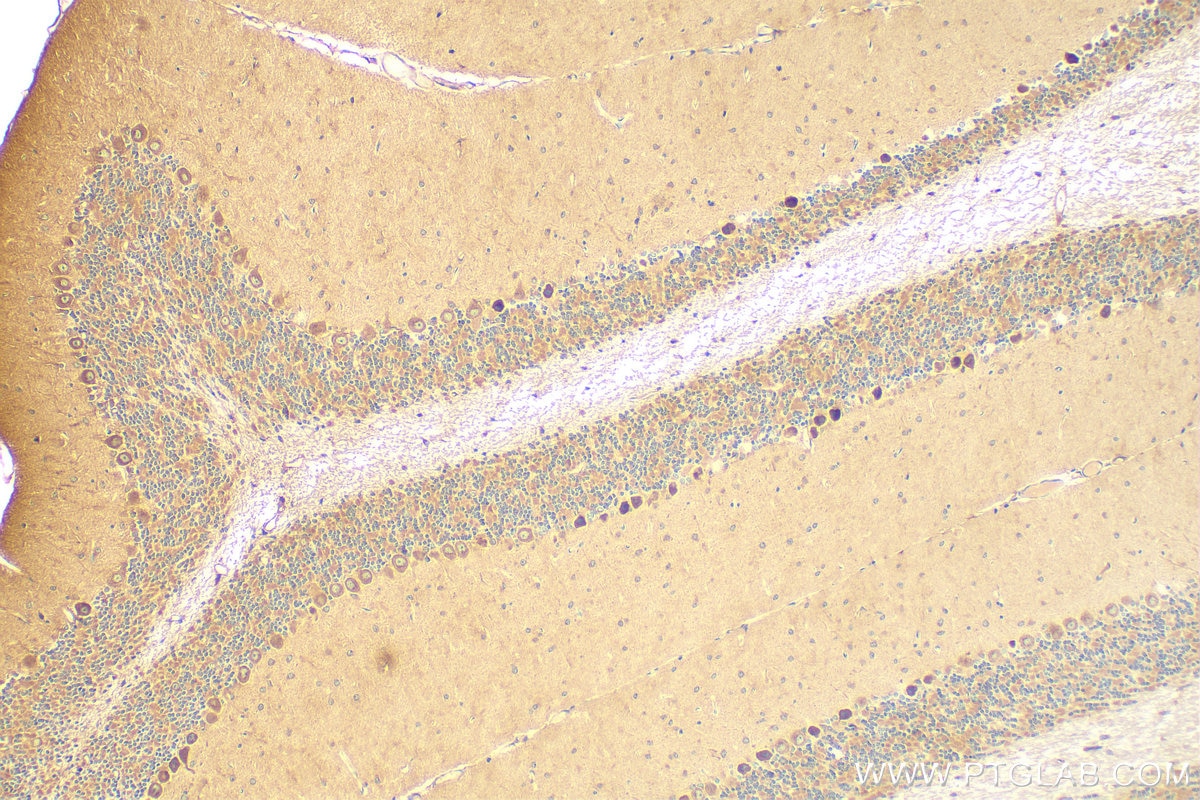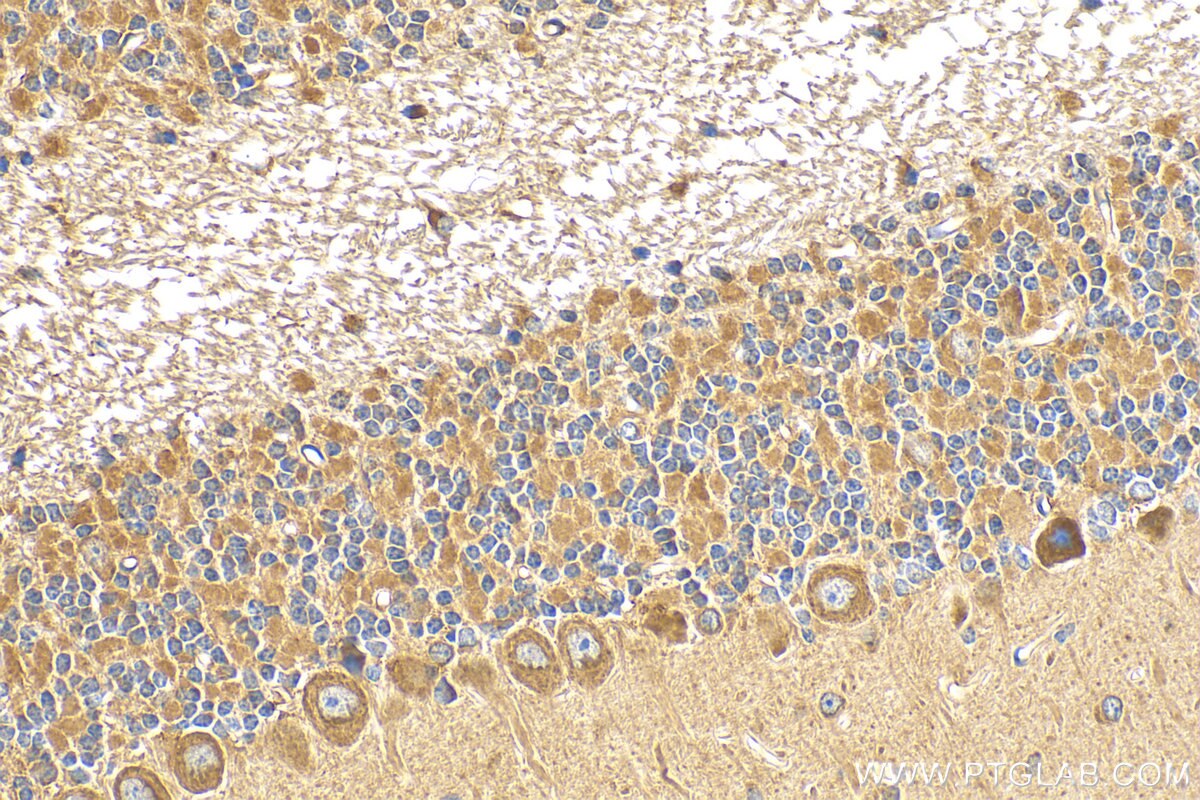Validation Data Gallery
Tested Applications
| Positive IHC detected in | mouse cerebellum tissue Note: suggested antigen retrieval with TE buffer pH 9.0; (*) Alternatively, antigen retrieval may be performed with citrate buffer pH 6.0 |
Recommended dilution
| Application | Dilution |
|---|---|
| Immunohistochemistry (IHC) | IHC : 1:50-1:500 |
| It is recommended that this reagent should be titrated in each testing system to obtain optimal results. | |
| Sample-dependent, Check data in validation data gallery. | |
Product Information
21766-1-AP targets GABRA6 in IHC, ELISA applications and shows reactivity with human, mouse samples.
| Tested Reactivity | human, mouse |
| Host / Isotype | Rabbit / IgG |
| Class | Polyclonal |
| Type | Antibody |
| Immunogen | GABRA6 fusion protein Ag16375 相同性解析による交差性が予測される生物種 |
| Full Name | gamma-aminobutyric acid (GABA) A receptor, alpha 6 |
| Calculated molecular weight | 453 aa, 51 kDa |
| GenBank accession number | BC096241 |
| Gene Symbol | GABRA6 |
| Gene ID (NCBI) | 2559 |
| RRID | AB_3085671 |
| Conjugate | Unconjugated |
| Form | Liquid |
| Purification Method | Antigen affinity purification |
| UNIPROT ID | Q16445 |
| Storage Buffer | PBS with 0.02% sodium azide and 50% glycerol , pH 7.3 |
| Storage Conditions | Store at -20°C. Stable for one year after shipment. Aliquoting is unnecessary for -20oC storage. |
Background Information
Gamma-aminobutyric acid (GABA) is the major inhibitory neurotransmitter in the mammalian brain where it acts at GABAA receptors, which are ligand-gated chloride channels. GABAA receptors are formed by pentameric assembly of 19 different subunit subtypes (α1-α6, β1-β3, γ1-γ3, δ, ɛ, π, θ and ρ1-ρ3) (PMID: 21930603). The mutation R46W of GABRA6 is associated with the pathogenesis of childhood absence epilepsy (CAE) (PMID: 21930603).
Protocols
| Product Specific Protocols | |
|---|---|
| IHC protocol for GABRA6 antibody 21766-1-AP | Download protocol |
| Standard Protocols | |
|---|---|
| Click here to view our Standard Protocols |

